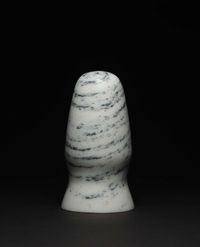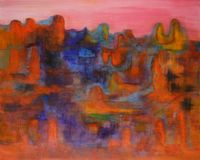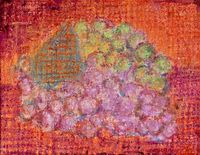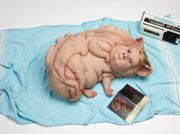Zhao Zhao is an artist who works across media, incorporating objects, performance, video, and painting into his practice. A significant figure among the young post-1980s generation of contemporary Chinese artists, the artist's work often interrogates his home country’s institutional systems and politics, appearing anti-authoritarian and non-conformist in its ethos.
Read MoreZhao’s background has greatly influenced his artistic output. Zhao Zhao was born in 1982, and he grew up in Xinjiang Uygur Autonomous Region, China's north-western frontier. Graduating with a BFA in Oil Painting from Xinjiang Institute of Arts in 2003, he became Ai Weiwei’s assistant, working with the well-known Chinese artist on documentaries that investigated several major Chinese national events, such as the Sichuan earthquake (So Sorry, 2012) and the imprisonment of Chinese dissidents (Disturbing the Peace, 2009).
In 2011, after Ai's well-publicised arrest in Beijing, Zhao struck out on his own as an artist, his time with Ai influencing the subversive and often provocative nature of his subsequent work. The sculpture Officer (2011), for example, is an enormous statue of a police officer shattered into pieces, possibly referencing the idea of a broken police force or overthrown power, or querying ideas around freedom of expression. Insofar as the statue’s face resembles the artist’s face, the work also arguably speaks to the vulnerability and powerlessness of an artist to make an impact on the world. Created after Ai's arrest, Officer is a juxtaposition of power and powerlessness. In 2012, the work was confiscated by the Chinese customs police while in transit for a scheduled solo exhibition of Zhao's work in New York.
Zhao’s interest in the impact of violent force on objects, which can also be glimpsed in Officer, has its origins in a car accident he had in 2007, in which he hit his head on the windshield of a car. Preserving the glass, Zhao referenced its form to create the ‘Fragments’ series, ongoing since 2007, that includes sculptures in steel, gold, and bronze, and are made from irregular fragments that radiate from the centre in a manner reminiscent of shattered glass. Another ongoing series with a similar concept is ‘Constellations’ (since 2013), which takes the form of glass panels featuring holes and cracks made by gunshots. The series also consists of paintings depicting shattered glass, hyperrealistically rendered in a limited colour palette of Prussian blue, Van Dyck brown, and white, such as those exhibited in Zhao’s solo presentation Zhao Zhao: Constellations II at Chambers Fine Art, New York, in 2015.
The year 2015 also marked the start of two important projects for the artist. One involved the artist completing 20 oil paintings (each 35 x 27cm) of himself over a two-year period, each presenting the same composition of the artist’s head and shoulders slightly in profile with hand placed dejectedly on chin, and staring blankly into space. Presented in 2017 at Lin & Lin Gallery in Taipei, the portraits become increasingly executed in looser and darker tones as the series progresses. Project Taklamakan (2015–2016), on the other hand and in marked contrast, involved the artist and a team of 30 people traveling 100km to connect a refrigerator in Beijing to a power source in the Taklamakan Desert in Xinjiang, which flanks the country’s north-west border. In October of 2017 in a follow-up to this marathon effort, the artist bought a camel and its keeper from Xinjiang to appear at Tang Contemporary in the artist’s aptly named solo exhibition, Desert Camel. Project Taklamakan appears to poke fun at Beijing’s geo-political manouverings in the region, including those relating to President Xi Jinping’s flagship Belt and Road Initiative (BRI); however, it is equally a very personal exploration of self, Zhao’s journey to Xinjiang marking the first time in ten years the artist had visited his home region. Conversely, the portraits, in regard of the context of Zhao’s wider practice, are arguably not only expressions of self-analysis, but equally reflect a wider social sense of helplessness.
A contrast in approaches appears to mark the artist’s practice generally, with it swinging deftly between subtle subversion and full-frontal provocation, and the personal and the political. The ‘Sky’ series (ongoing since 2009), for example, includes semi-abstract paintings that depict deep-blue skies with swirls of colours. Based on the polluted skies of Beijing, the 'Sky' paintings appear to be poetic renderings of nature’s beauty, but in the colours used they reference China’s state of pollution. The photographs and video from Zhao’s performance Slap and Secret Love, Leather Shoe and Family (2014), on the other hand are more directly confronting. In these videos, the artist slaps a volunteer, stabs artist Sun Yuan in the back, gifts a volunteer with the knife used to stab Sun, and finally spends 15 hours with a family until he is asked to leave.
Rui Tang | Ocula | 2019








